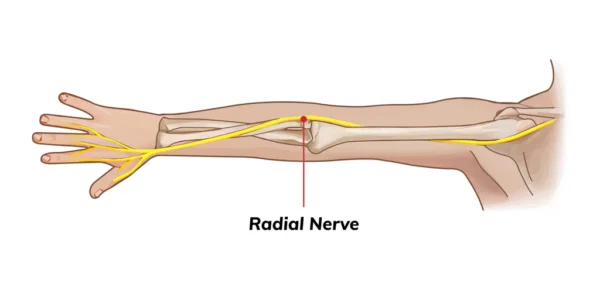
It’s been a year now since my nerve graft, and I thought I would like to write up some thoughts on recovery so far, but as soon as I started, I pumped out 5000 words, and I realized this would not be a single post by any means.
SO I’m writing them as a series, and collecting them here on a masterpost!
Does the internet need 10K words on my arm surgery recovery? I don’t know!
Can the internet be trusted with them? I also don’t know!
But I do really feel a need to write them down, so we’ll try this to start.
-
one year of arm stuff – part 11 –left hand life
When all this was ramping up, I tried to do a lot of research into what tools I would need to navigate the world with my left hand, and there were two things flooding my search results: things for parents to buy for their left-handed kindergarteners, and mensa nerds looking to minmax their IQ by becoming ambidextrous.
So, life seems, at least from dipping my toe in it, to be a liiitttle bit condescending to left-handed people still.
My parents’ generation were kids back when teachers would smack you if you tried to write with your left hand, and it does seem significantly good that we don’t do THAT anymore, but, goddamn. There are a LOT of apparently right-hand-specialized tools that don’t SEEM specialized at first glance.
Left-handed scissors were by FAR the best thing I purchased: without relearning how to use scissors, using right-handed scissors in my left hand is deeply annoying. Left handed scissors work instantly with no learning curve. They contain no software, they are available most places I see any scissors (tho, def not all), and they weren’t marked up hugely over the right-handed scissors I saw in the same stores.
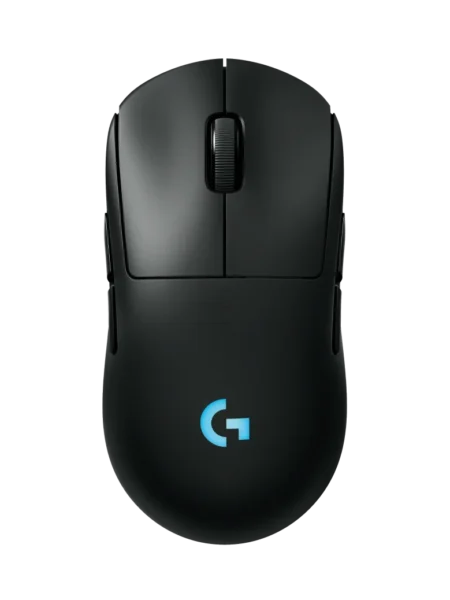
Left-hand dominant folks I know can all use left or right-handed scissors; left-handed ones just change how they see what they’re cutting, and how ergonomic the pressure required to cut is. They make my day to day slightly easier and I appreciate them immensely.
Left-handed mice are a lot harder to find; while I don’t think hand dominance and mouse hand choice is usually connected for most folks, having no ability to extend (lift) my fingers on my right hand meant mousing with it was out of the question. Being able to mouse with both hands really helped me back in my carpal tunnel days and I was determined to find a gaming mouse for my left hand for this recovery period. In the end I found an ambidextrous Logitech – the Pro 2 Lightspeed: you can change which side has the extra buttons, which is a really great feature, and when I am mousing more with both hands I might enable the buttons on both sides and duplicate their function.
In the specialized realm of music and sports there are left-handed alternatives for string instruments, for golf clubs, baseball gloves, etc. That was no surprise.
As I dug into it, though, it seemed to spiral. Did you know kitchen knives are sharpened with right-handed use in mind? Can openers absolutely are designed for right-hand dominance. Corkscrews and screwdrivers and so forth are designed expecting the strongest force on them to be compatible with the strongest force capable in a right hand. None of this PREVENTS left-handed use! It just means that left-handed use is slightly (or significantly sometimes) less ergonomic.
Slightly less ergonomic might not be a big deal when you’re able bodied, and when you’ve spent your life learning to accomodate that slight hurdle. And, as my uncles tell me, it’s a lot better nowadays than when they’d come home with welts on the back of their left hands for writing with the wrong one in class. (They rarely use left-hand specific tools as there was no chance of those being available when they were learning things as kids.) But it DOES add a layer when you’re NOT ablebodied, or have anything else adding exhaustion to your day.
Anyways, left-handed-ness. The world seems more annoying for left-hand dominance than I had realized. Sorry for my prior ignorance!
comments
-
one year of arm stuff – part 12 –ambidexterity – writing
For six months I had no nerve connection whatsoever to my lower right radial nerve. This meant that all of the muscles it powered were completely switched off, paralyzed, leaving me unable to uncurl my fingers, lift my wrist, tilt my wrist, or open my thumb, and leaving me much weaker at gripping, rotating my lower arm at the elbow, and bending my elbow. This had a waterfall effect – with less function, the arm as a whole gets used less, and the whole arm weakens and loses muscle mass, even in muscles still fully powered by healthy nerve connections. This meant my right arm actually became less useful over the course of those six months after surgery, in a bad but somewhat inevitable feedback loop.
I knew this was coming, and i had started to prepare before surgery by training myself to do a few things left-handed – writing and drawing were the big ones, but not the only ones.
I also have some leftover left handed skills from having carpal tunnel back in 2007 – it was easy enough to switch over my mousing hand, for example, as I’d done it before several times, whenever my right wrist flared up. Easy, as mentioned in prior posts, as assessed on the new difficulty curve of my life.
Left-handed writing was a very strange thing to tackle – firstly, it is definitely different than right-handed writing. We’ve designed our letterforms to work with a very specific biomechanical setup, and the left hand flips it all completely.
There’s three distinct hand positions folks use to write left-handed – keeping your hand above the line, alongside the line, or below the line of text. Smearing your lines by rubbing your hand along them as you progress from left to right is a real frustration, and the above-the-line and below-the-line hand positions are both responses to that concern; but the internet was very certain that the above the line, curled-wrist hand position was a recipe for carpal tunnel, so given my experience with that I wanted to avoid it. This really only left me the below-the-line hand position for writing, and the problem with that was just how different it felt from writing right-handed.
Apparently the above-the-line hand position’s main advantage is how much it allows a left-handed writer to mimic the motions and shapes of right-handed writing. From my reading, it’s implied that this was mostly a benefit to teachers, who didn’t have time to teach two totally different systems of writing – but people who get into calligraphy left-handed tend to write from below the line, which gives them more natural wrist positions and still a whole suite of beautiful curves and swoops available to build the letters. In fact, the calligraphers I’ve found all universally turn the paper a full 90° and write from top to bottom instead of from left to right. Despite respecting their expertise, I really couldn’t get my brain around that fullly rotated page, and ended up writing from underneath with a maybe 20° tilt the other way, to help balance the natural backwards lean of my left handed letters.
As a geriatric millennial, I learned cursive writing in grade school, and I’m much more comfortable and fast with it than printing; I like taking handwritten notes in meetings, doing my brainstorming on paper, and I worked hard to be able to write as fast as I think. So my first and biggest writing concern was getting myself to learn left-handed cursive.
Well, folks, with cursive writing being forgotten at large and left handed writing of any kind being a specialized concern, there were not a lot of good resources on the internet. Many of them taught the curled-wrist above-the-line hand position and then reproduced the same letterforms and line directions as right-handed writing. But it’s patently obvious to me that left-handed cursive needs to respond to left-handed biomechanics, and folks, it’s been a real pain to track anything like that down online, except in the world of calligraphy.
Which is why I spent six months getting deeeeeeep into calligraphy.
Shoutout to left handed calligraphers through the ages for approaching their craft so seriously and for sharing their methods so generously! From out of print books on the internet archive to real time demonstrations from Instagram calligraphy artists, the world of left-handed calligraphy was an extremely inspiring and amazingly professional scene to drop into for a while.
After relearning my usual cursive with my left hand, to keep things interesting I decided to learn a few other scripts as well. Once you’ve overthought the shape of the letter A for a day or two just to get to one comfortable iteration of it, it’s not a big leap to then start exploring other variations of it just for fun.
I hesitate to assign silver linings to this whole experience at this stage still, but I will admit that having to relearn how to write with my opposite hand has made me really relearn what writing is – what letters are, how they work, how we draw them, how we read them, what different scripts etc actually mean. I care more about letterforms and fonts and such than I ever did before, and it’s made writing a lot more interesting!
But don’t assume that meant any of this was easy, or particularly intuitive, or at all relaxing.
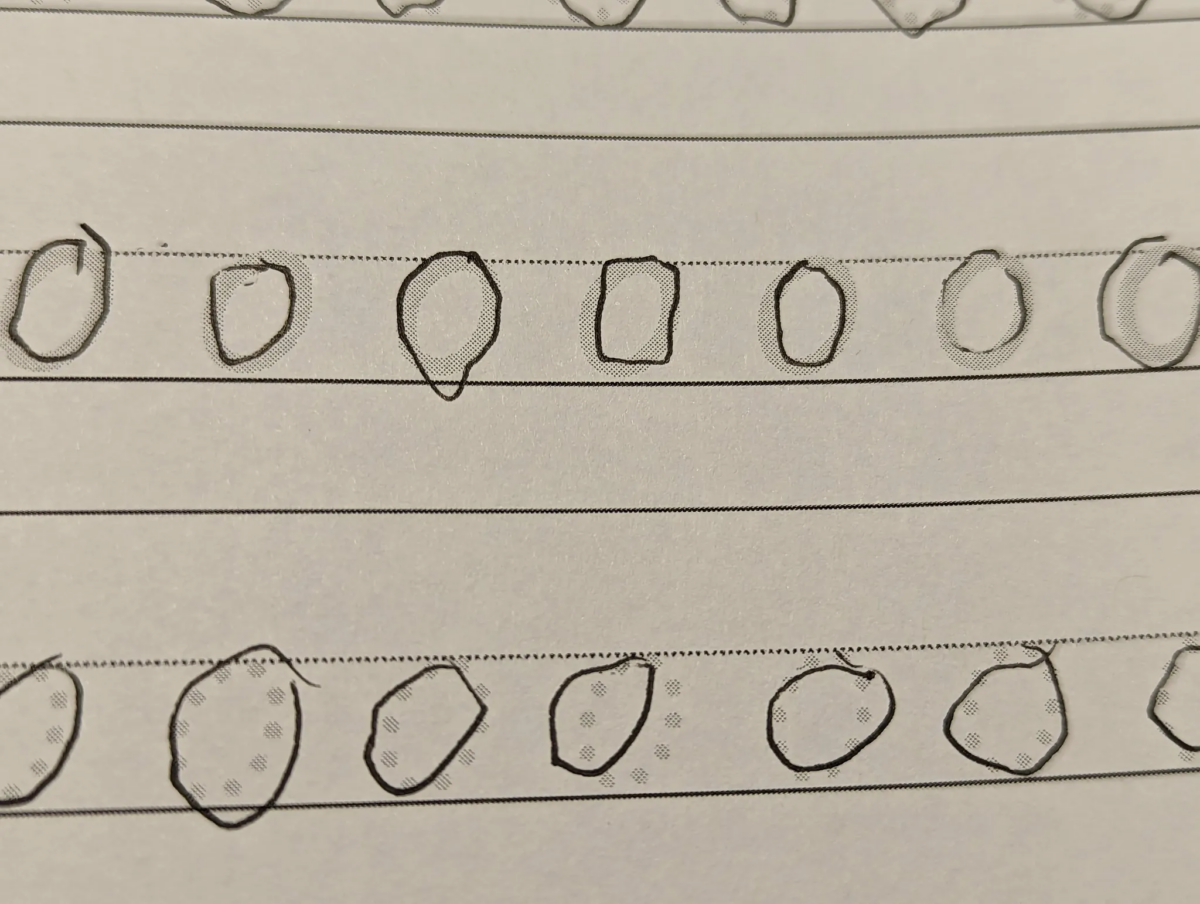
I did purchase some learn-to-write workbooks and tried just filling them out to measure my practice, but as you can see, it was both rough going and mind-numbingly boring. Initially my left hand couldn’t reliably make any particular marks whatsoever, whether straight, angled, round, etc. It never stopped requiring intense focus to write, and I usually have to sit and think about each individual letter I am recording to the page. This is not at all a replacement for how I used to write with my right hand – I really could move thoughts through my arm to the page without having to consciously translate them into letters at all, and my left hand, despite six months of complete immersion, never got anywhere close to that level of comfort.
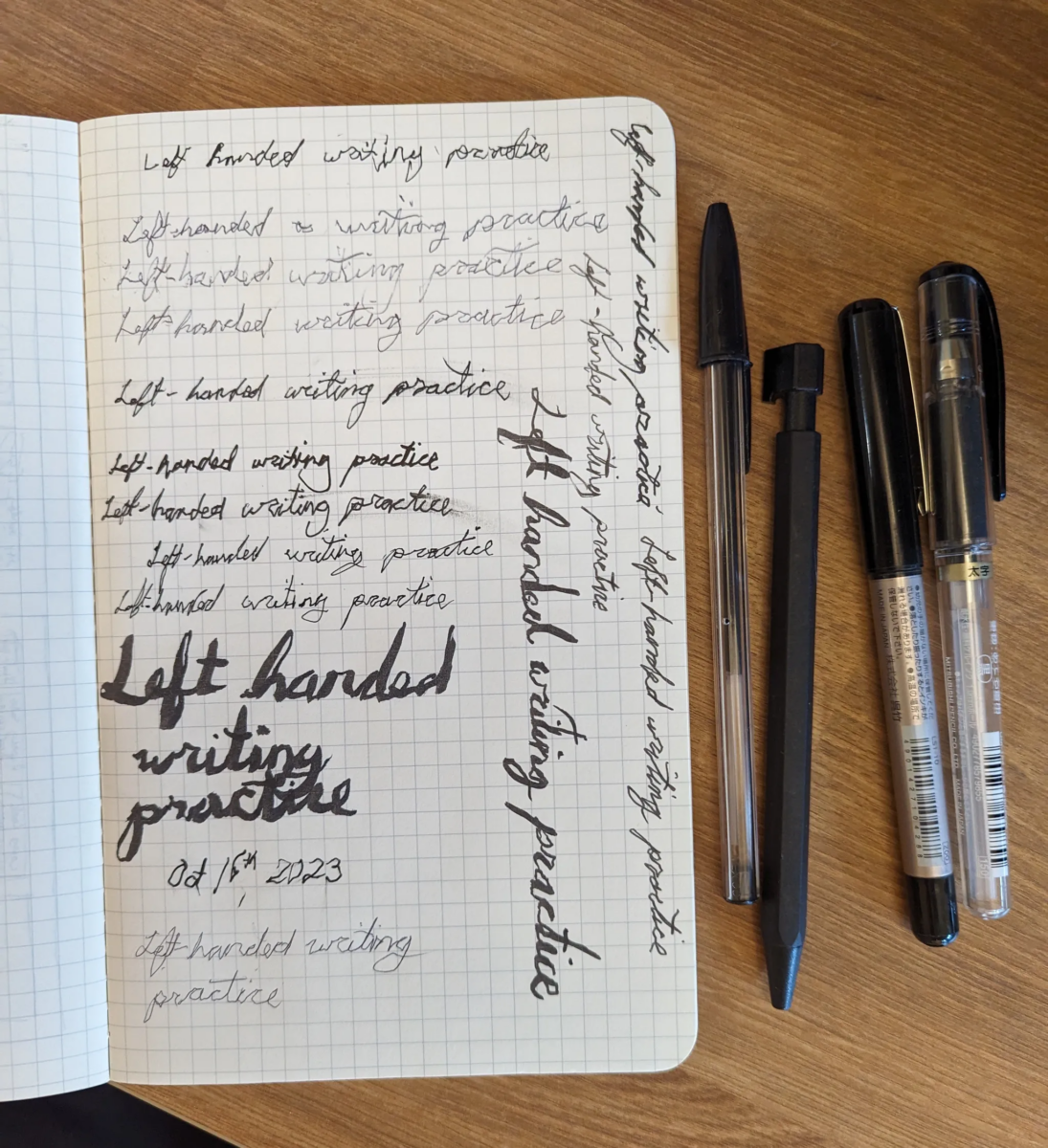
By February I was starting to hold the pen in my braced right hand again, which was exciting, but not at all a return to easy comfort. Additionally, it was legit confusing! but more on that in a later post.

comments
Leave a Reply
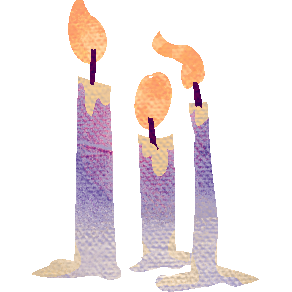
Leave a Reply